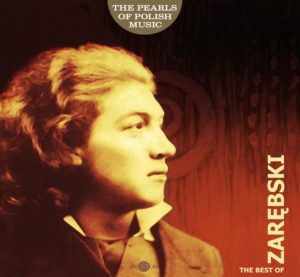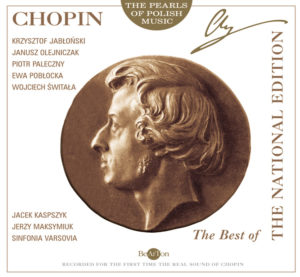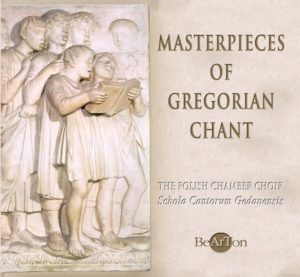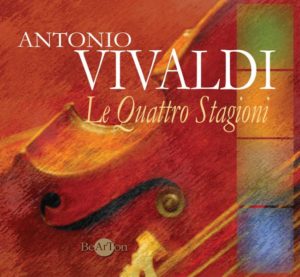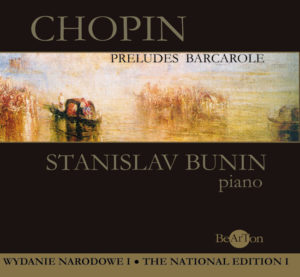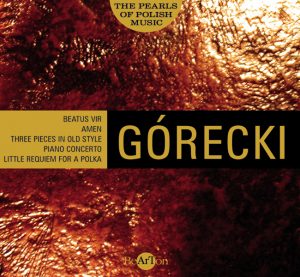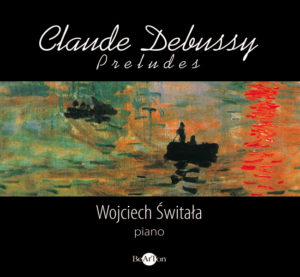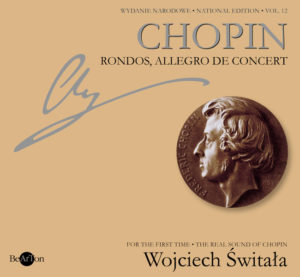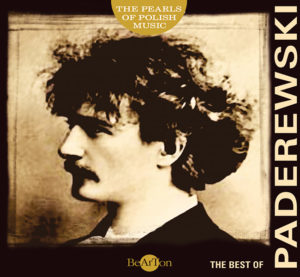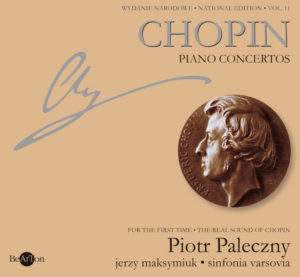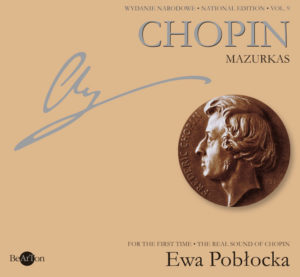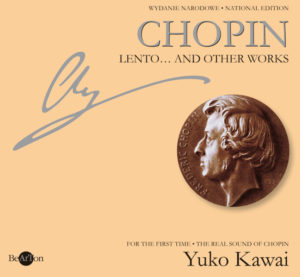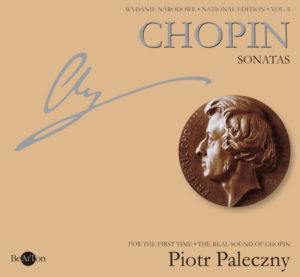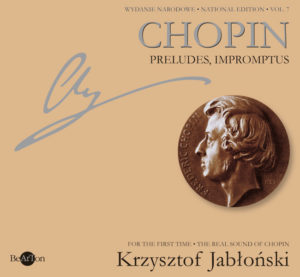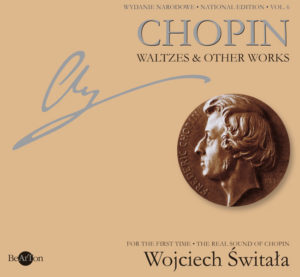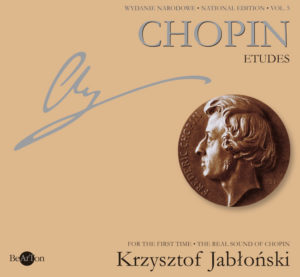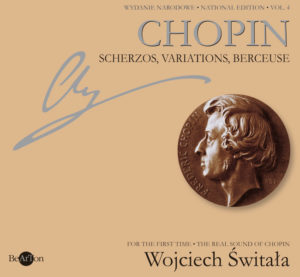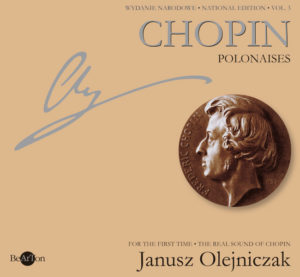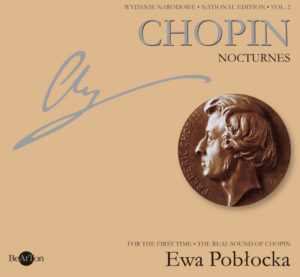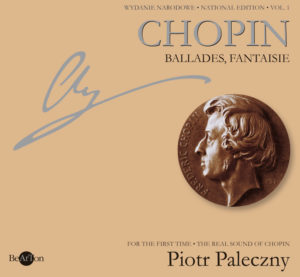Chopin – Preludes, Barcarolle
Chopin – Preludes, Barcarolle
Cat. No. CDB028
Music disc: CD-AUDIO
Performer:
Stanislav Bunin – piano
Disc content
Preludes op.28
- nr 1 in C major – 0’43”
- nr 2 in A minor – 2’05”
- nr 3 in G major – 1’00”
- nr 4 in E minor – 2’06”
- nr 5 in D major – 0’37”
- nr 6 in B minor – 1’28”
- nr 7 in A major – 0’45”
- nr 8 in F sharp minor – 1’57”
- nr 9 in E major – 1’26”
- nr 10 in C sharp minor – 0’30”
- nr 11 in B major – 0’34”
- nr 12 in G sharp minor – 1’19”
- nr 13 in F sharp major – 2’49”
- nr 14 in E flat minor – 0’32”
- nr 15 in D flat major– 5’31”
- nr 16 in B flat minor – 1’16”
- nr 17 A flat major – 3’08”
- nr 18 in F minor – 0’56”
- nr 19 in E flat major – 1’39”
- nr 20 in C minor – 1’42”
- nr 21 in B major – 1’45”
- nr 22 in g minor – 0’47”
- nr 23 in f major – 0’49”
- nr 24 in D minor – 2’39”
- Prelude in C sharp minor op.45 – 3’59”
- Barcarolle in F sharp major op.60 – 8’16
Total time – 50’48”
Prizes:
Listen a part
42.99złRead more
© ℗ 2004 Bearton
The Preludes and Barcarolle
The cycle of 24 Preludes Op. 28 is the fruit of Chopin’s stay in Majorca in 1838 and 1839. This Mediterranean island was at that time a virgin and inhospitable land. The composer worked on the Preludes in the ruins of a deserted Carthusian monastery in Valldemosa. The monastery cell was a ‘strange place”, to quote his own words. He composed by candlelight, with a volume of Bach’s Das Wohltemperiertes Klavier at his side, conscious of the spirit of poetry with which “everything breathed” there, living between the rocks and the sea” and looking at the ‘colours of the most wonderful spots, still unspoilt by onlookers”. Chopin was seriously ill at the time, having lost almost all hope for fulfilling his plans in life.
It would be difficult to devise more romantic scenery to inspire the shape of a musical piece. It was not without reason that Schumann described the Preludes as “morbid, feverish and stupefying“, whereas to Liszt they appeared as an “outburst” and “sudden entry“. Enchanted with the whole cycle, Andre Gide described it as ‘horrifying“. The divergences of opinion about the Preludes are not surprising. These are indeed works which are bound to enthrall listeners with their extraordinary range of timbral expression, at the same time opening new horizons in the development of the genre.
Prior to Chopin, the term ”prelude” was associated with two traditions. In the earlier Baroque tradition represented by Bach, it was a free harmonic-figurative piece preceding a fugue. A later tradition is linked to an improvisatory introduction of the Iistener into the character of a work on a grander scale. Chopin’s Preludes do not fit either of these conventions. Even though each of the 24 preludes can be performed independently, they are arranged into a cycle treated as an integral whole. What makes the cycle a unified whole is itstonal sequence, a succession of major keys and their relative minors arranged according to the circle of fifths. In addition, a unique ‘motivic cell„(J. J Eigendinger) can be easily identified in each of the preludes. This is an interval of a second which is formed in the melodic line from a Sixth falling onto a fifth. The integral character of the cycle’s construction is ensured first and foremost by the principle of contrast in the work’s highly diversified expressive features. lt may be said that Chopin’s Preludes are like ‘the universe in miniature” in which, according to Hugo Leichtentritt, ‘the richly varied moods and impressions have no parallels in the entire musical literature”. Furthermore, ‘what is ecstatic, idyllic and imbued with the weirdness of nocturnal Visions; what is mystical, capricious, charming and grandiose, landscape-like tones, despair, fury and terror, the delicate love poems and heroism – all this finds at the master’s hand a succinct and blunt expression”.
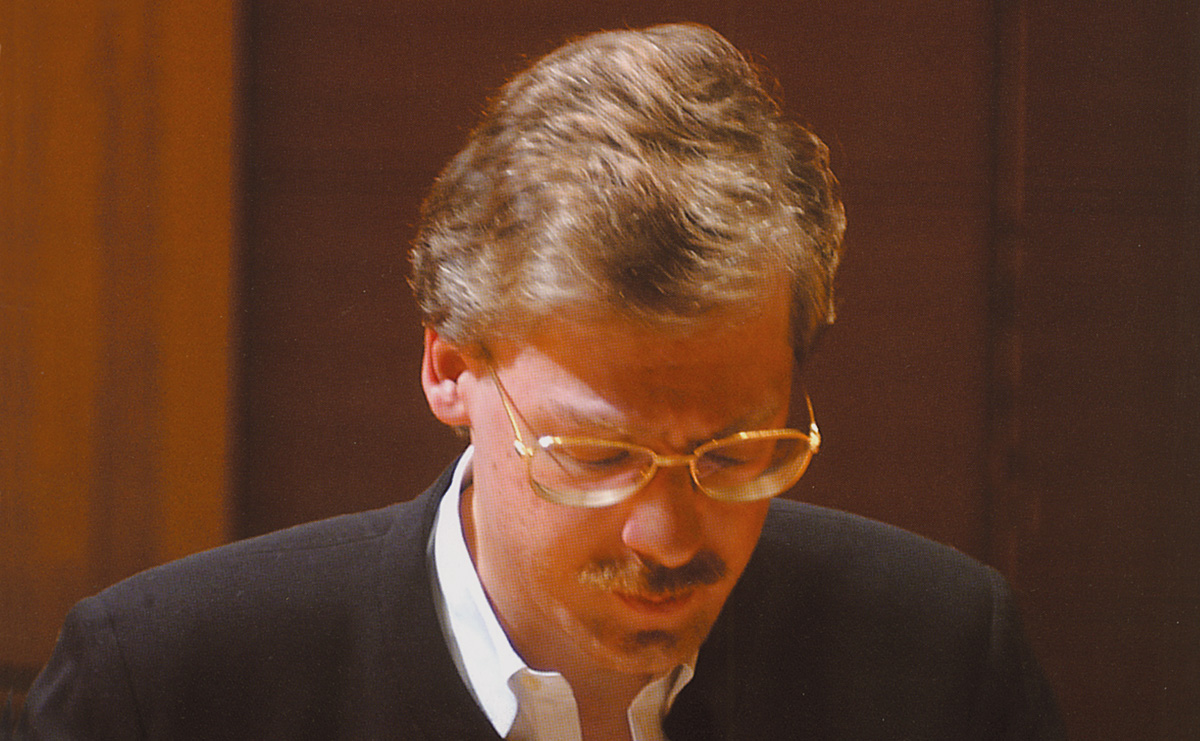
Stanislav Bunin
The Prelude in C sharp minor Op. 45 was written in Nohant in the autumn of 1841. It was dedicated to Elizaveta Tchernishev, one of Chopin’s students, and in the Viennese edition was included in the volume devoted to Beethoven. A rather long piece fora prelude, it is bound to impress anyone with its subtlety and refined simplicity. It is a single grand modulation across a dozen or so keys. With its dream-like expression and related, in terms of archetype, to Beethoven’s Moon/ight Sonata, it is a concert prelude of the highest calibre. It has a “volatile atmosphere that is difficult to grasp” (James Huneker) and a cadenza with “a wonderfully glittering play of lights and colours which was not to be found in pre-Chopin’s music” (Zdzislaw Jachimecki).
The Barcarolle in F sharp major Op. 60, written in 1845, is among the masterpieces of piano literature. With its 12/8 metre and ornamental melody in thirds, its ancestry may be traced to the tradition of the Italian gondola song (Rossini, Donizettil, with its erotic expressivity. Some writers see the work as “a love scene in the quiet gondola” (Karol Tausigl, “a masterpiece which pulsates the blissful feeling of love” (J. Hunekerl or the heights of Chopinesque Iyricism” (Arthur Hedley). Others stress the Italian provenance of the work, describing it as a kind of “wonderful hymn in praise of the beauty of Italy, a dream about […] Venice” created in “the atmosphere, colours and mood of the South” (Z. Jachimecki), coupled with “an apotheosis of the sun, beautiful warm weather and brightness, so intense that it is almost dazzling” (T. A. Zieliński).
Chopin’s Barcarolle may be described as a nocturne in the style of a “romance“. Hedley referred to it as “the most beautiful nocturne of all“. As such, it met with universal admiration. Its beauty has been called ‘stunning” (H. Leichtentritt). According to John Flink it is one of ‘the most powerful and rawshing musrcal works of the 19th century.
Marek Wieroński
Reviews
To początek serii, w której dzieła Chopina w wersji zgodnej z Wydaniem Narodowym będą interpretować wielcy pianiści zagraniczni. Słuchając Bunina można odnieść wrażenie, że pianista świadomie podkreśla w swojej interpretacji dojrzałość.Preludia dramatyczne – E-dur, gis-moll. g-moll – gra godnie i dostojnie… W ostatnim d-moll prowadzi melodie w sposób nie pozwalający na sprzeciw…. nawiązuje do podobnie wyartykułowanej kantyleny Preludium a-moll …. i w sposób zadziwiający zamyka epicki – w jego interpretacji – cykl…..Pięknie gra też Preludium a-moll , …mistrzowsko zamyka okres Preludium A-dur, którego lapidarny urok docenia się dopiero po wybrzmieniu ostatniego dżwięku… Buninowską interpretację Preludium cis-moll op.45 umieściłbym w połowie drogi między romantyczną …grą Marthy Argerich a mistycyzmem, jaki w tej kompozycji dostrzega … Ohlson. Narracja jest płynna,jednocześnie bardzo refleksyjna, ciekawa… W Barkaroli urzekła mnie koda… Ciekawy to więc początek nowej serii…
… nagranie Bunina rzeczywiście niesie ze sobą pewną tradycję wykonywania muzyki Chopina co ma wartość ogromną i ponadczasową ….Ciekawa jestem , którzy inni mistrzowie wezmą udział w tym jakże ciekawym i wartościowym przedsięwzięciu.

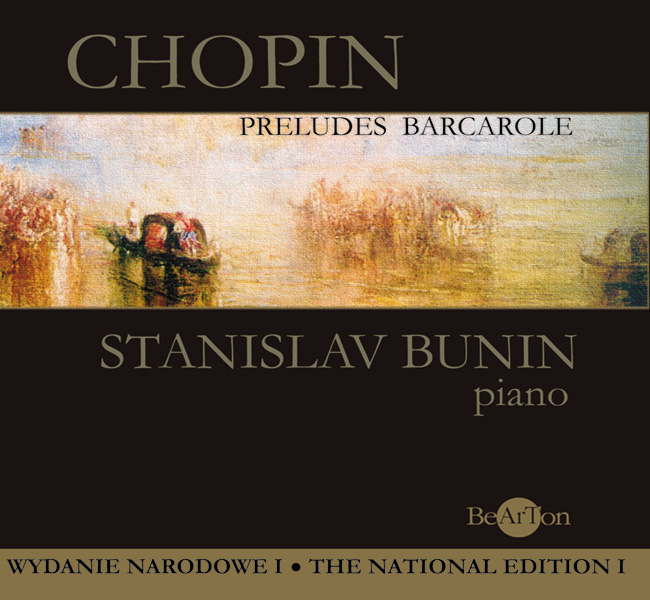



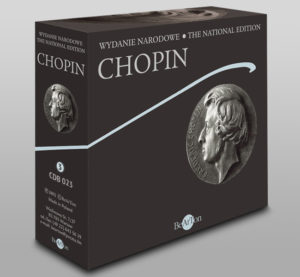
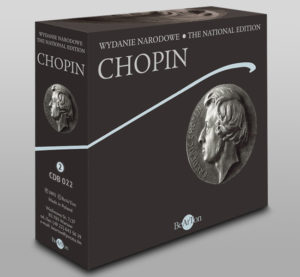
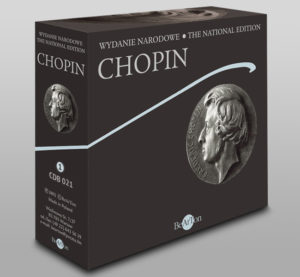
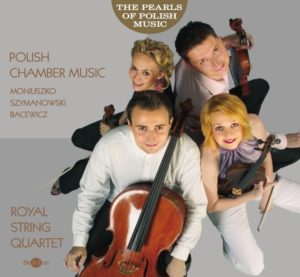
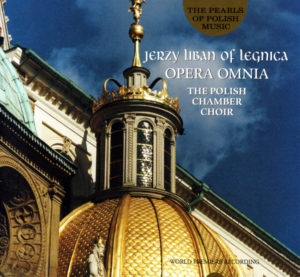
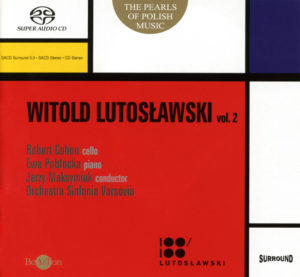
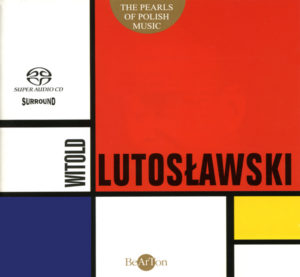
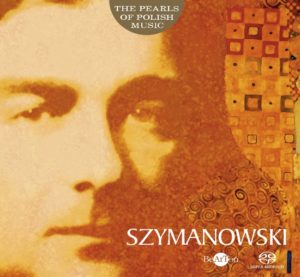
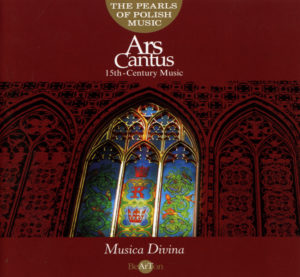
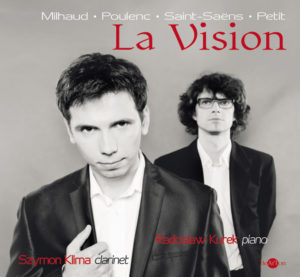
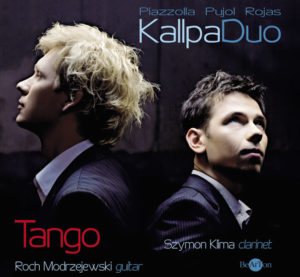
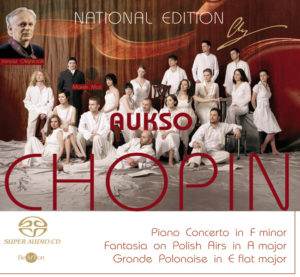
![Chopin – Walce [B] i inne utwory CDB047](https://www.bearton.pl/wp-content/uploads/Chopin-Walce-B-i-inne-utwory-CDB047-A-300x277.jpg)
![Chopin – Pieśni [B] CDB046](https://www.bearton.pl/wp-content/uploads/Chopin-Piesni-CDB046-A-300x277.jpg)
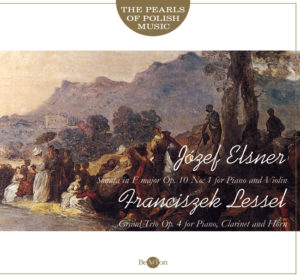

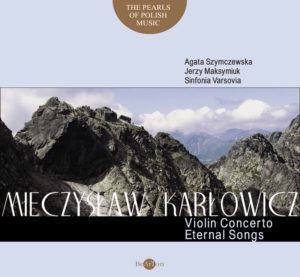
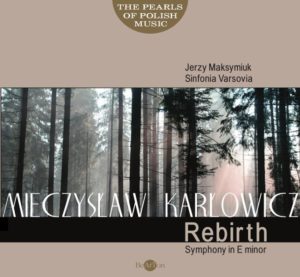
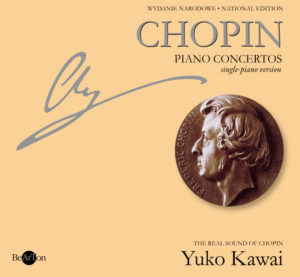
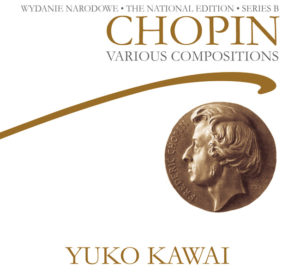
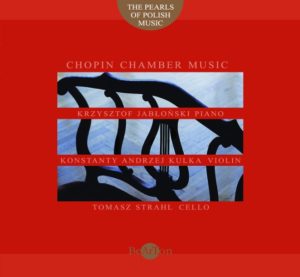
![Chopin - Mazurki i inne utwory [B] CDB038](https://www.bearton.pl/wp-content/uploads/Chopin-Mazurki-i-inne-utwory-B-CDB038-A-300x277.jpg)
![Chopin – Polonezy [B] CDB037](https://www.bearton.pl/wp-content/uploads/Chopin-Polonezy-B-CDB037-A-300x277.jpg)
